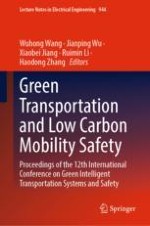2023 | OriginalPaper | Chapter
Driving Risk Identification Considering Coupling Coordination Degree of Primary and Secondary Tasks
Authors : Ma Yanli, Zhu Jieyu, Yining Lou, Dong Fangqi
Published in: Green Transportation and Low Carbon Mobility Safety
Publisher: Springer Nature Singapore
Activate our intelligent search to find suitable subject content or patents.
Select sections of text to find matching patents with Artificial Intelligence. powered by
Select sections of text to find additional relevant content using AI-assisted search. powered by
